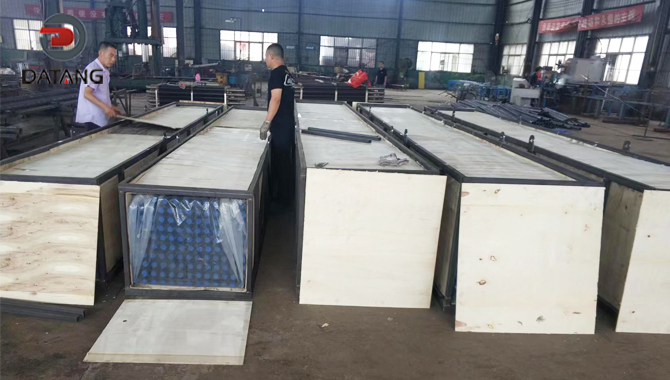Spiral fin tube is an efficient heat transfer element with spiral fins. It consists of a metal tube with a continuous, helical (spiral) fin that is tightly wound around the exterior surface of the tube. Its heat transfer area is several to dozens of times that of a light tube, which can enhance heat transfer, reduce flow resistance, and reduce metal consumption, thereby improving the economy and operational reliability of heat exchange equipment. Spiral finned tubes have been widely used in various boilers.

Spiral fin tube Materials:
Spiral fin tubes are typically made from metals such as aluminum, copper, or stainless steel, which have good thermal conductivity properties. The choice of material depends on the specific application and the properties required.
Spiral Configuration:
The fins are wound in a continuous spiral pattern along the length of the tube, creating a helical shape. This configuration maximizes the contact area between the tube and the surrounding fluid or air.
Types of Fins:
There are different types of spiral fins, including plain (smooth) fins, which are used for basic heat transfer applications, and segmented or serrated fins, which provide improved heat transfer performance.
Advantages of using spiral finned tubes:
1) The heat exchange area is increased in the effective space to improve the heat transfer effect.
2) Reduce the space occupied by the heat transfer surface and reduce its volume, especially suitable for quick-installation boilers.
3) Reduce equipment costs and improve equipment safety.
4) The operating cost is reduced due to the reduction of water side pressure drop.
5) The stiffness of the finned tube is increased, which improves the seismic resistance of the tube.
Spiral finned tubes can be manufactured using a variety of methods. The finned tubes used in heat exchange equipment such as boilers and pressure vessels mainly include the following manufacturing methods: high-frequency resistance welding spiral finned tubes, brazed spiral finned tubes and Integral spiral fin tube.
Spiral finned tubes manufacturing method
Spiral finned tubes can be manufactured by a variety of methods. The finned tubes used in heat exchange equipment such as boilers and pressure vessels mainly include the following manufacturing methods:
–High frequency welding spiral fin tube
High-frequency resistance welding of spiral finned tubes introduces high-power high-frequency current into the parts to be welded, and uses the resistance heat generated by the current through the contact surface and adjacent areas of the joints of the parts to be welded to make the welding contact surface achieve molten or semi-melted plasticity. state, and then apply appropriate pressure to the welding contact surface to complete the welding of the finned tube.
–Brazed spiral fin tube
Brazing spiral finned tube is to fill the space between the parts to be welded with a filler metal with a lower melting point than the welding parts, and then heat it to the brazing temperature. When the welding parts do not melt, the filler metal melts and wets the brazing well. However, the brazing joint is formed by diffusion at the contact point of the welded parts, thereby completing the welding of the spiral fin tube.
–Integral spiral fin tube
Integral spiral finned tube is an integral spiral finned tube that is formed at one time by extruding and rolling thick-walled tubes (blank tubes) under medium-frequency continuous heating. It is the latest method of manufacturing finned tubes. A domestic company has already applied for patents for the integral spiral fins and self-made integral fin tube manufacturing equipment.
Spiral fin tube Applications:
Spiral fin tubes are commonly used in various industries and applications, including:
– HVAC (Heating, Ventilation, and Air Conditioning) systems: They are used in air-cooled heat exchangers and air heating coils to enhance the heat transfer between the refrigerant or air and the surrounding environment.
– Process industries: They are employed in heat exchangers for applications such as oil refining, chemical processing, and power generation.
– Refrigeration: Spiral fin tubes are used in evaporators and condensers to improve the efficiency of refrigeration systems.
– Power plants: Spiral fin tubes can be found in power generation plants, including steam boilers and condensers, to enhance heat transfer and overall efficiency.
Spiral fin tube Efficiency:
Spiral fin tubes can significantly improve heat transfer efficiency compared to plain tubes, making them an attractive choice in applications where efficient heat exchange is essential.
Spiral fin tube Maintenance:
Proper maintenance is required to ensure the longevity and effectiveness of solid spiral fin tubes. Accumulation of dirt, debris, or corrosion on the fin surfaces can reduce their efficiency.
Spiral fin tube Package:



